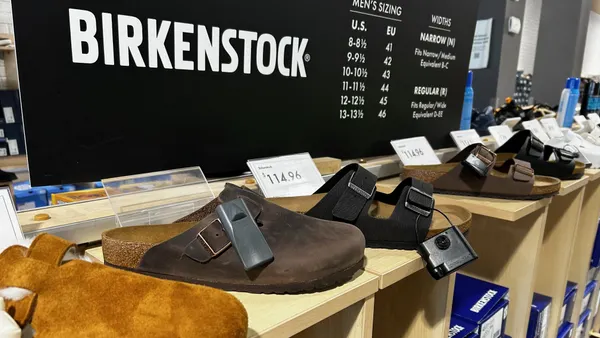Dive Brief:
-
Walmart is turning to its vendors for more consumer products like sauces and soaps and general merchandise like toys and home goods, priced at least $5 but preferably $10 or more, to boost online profits, Reuters reports, citing unnamed sources. Walmart didn't immediately return Retail Dive's request for comment.
-
Walmart U.S. e-commerce chief Marc Lore last week met with suppliers including Procter & Gamble, Unilever, Kimberly-Clark and Clorox, sources told Reuters. The move is aimed at boosting margins at its online business, according to the report.
-
Walmart's digital business is growing rapidly but margins are suffering amid the inefficiencies of e-commerce. Net e-commerce sales in the third quarter rose 50% and gross merchandise volume rose 54%, but gross profit margin declined 29 basis points, due mostly to price cuts in certain markets and the mixed effects of the growing e-commerce business, the retail giant said in November.
Dive Insight:
Walmart has garnered kudos from analysts since its 2016 acquisition of Lore's Jet.com, which has proven to be great fodder for its e-commerce business. In addition to greatly expanding its online assortment, Walmart has doubled down on its "always low prices" promise, and is closing price gaps against Amazon in several categories, according to research from retail data analytics firm Market Track and e-commerce analytics firm Profitero.
But some observers have warned that the brick-and-mortar stalwart, which has perfected the uber-efficient offline distribution of goods at rock-bottom consumer prices, will have to contend with the inefficiencies and expense — and therefore the lower margins — of online fulfillment.
That appears to be happening. In November, Walmart reportedly began quietly raising its online prices for key consumer goods, including boxed macaroni and cheese, toothbrushes and pet food, and announced lower prices for online shoppers picking up orders in stores.
Lore's meeting with key vendors also follows a logical path to greater online efficiency, but that's not the end of the story, according to Profitero VP of strategy and insights Keith Anderson, who noted that many online retailers focus on an item's price-to-weight ratio as a "quick indicator of profitability." On individual items, there's a margin threshold that depends on an online retailer's logistics and supply chain efficiency. Low-priced, heavy or bulky items are simply unlikely to yield much profit because their asking price won't likely cover shipping and handling, he told Retail Dive in an email. Selling premium products with better margins or selling in bulk can balance that.
But that's not necessarily a smooth path, he also said, because many consumers prefer individual packs. "Most people don't buy six months' of toothpaste at once," Anderson said. "So retailers have also introduced programs to help consumers buy smaller packs without losing money."
Amazon does this with its "add-on" program, where some low-priced items are only available when added to minimum orders of $25, he noted. Amazon's Pantry and Target's Restock programs also offset the higher costs of bulky items by giving shoppers an incentive to fill up their boxes — the customer gets the most out of her shipping fee and the retailer sells more, higher-margin products. Boxed, meanwhile, also employs bulk-pack configurations and higher item counts — their average order is about 10 items — to improve order economics, according to Anderson.
"Walmart is wise to focus on improving its economics, and helping educate suppliers about what makes an item economically viable is a key step," Anderson said. "But Walmart.com can also learn from Amazon, Boxed and even its sister site Jet about striking a balance between shoppers' demand for low prices on small packs and the need to actually make money."
Walmart is unlikely to stop at vendor meetings to solve its online profitability issues, he said. "In addition to this push for higher prices on household essentials, it wouldn't surprise me to see more iteration from Walmart this year, perhaps introducing programs that give shoppers more economically sustainable options for buying lower-priced items."














